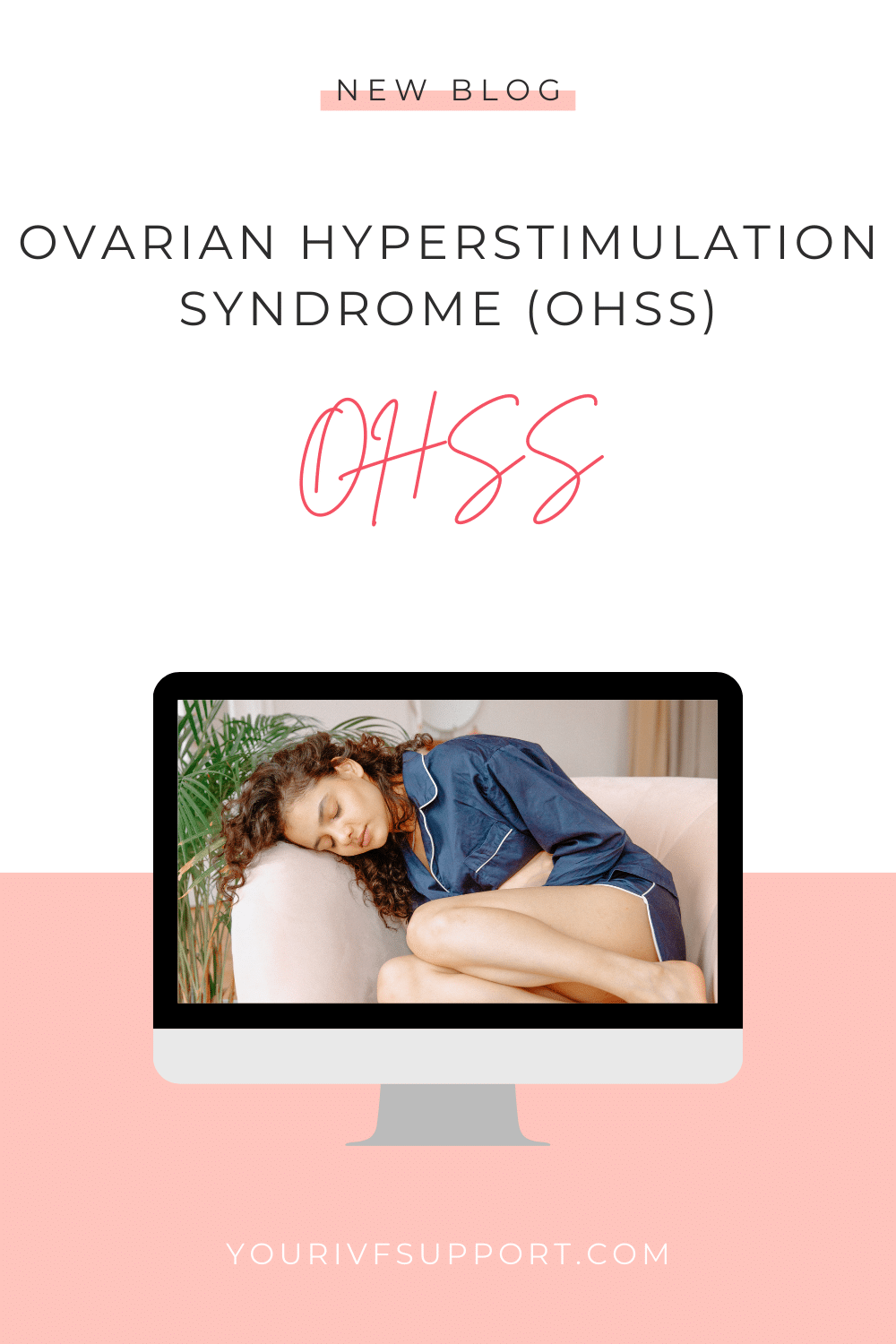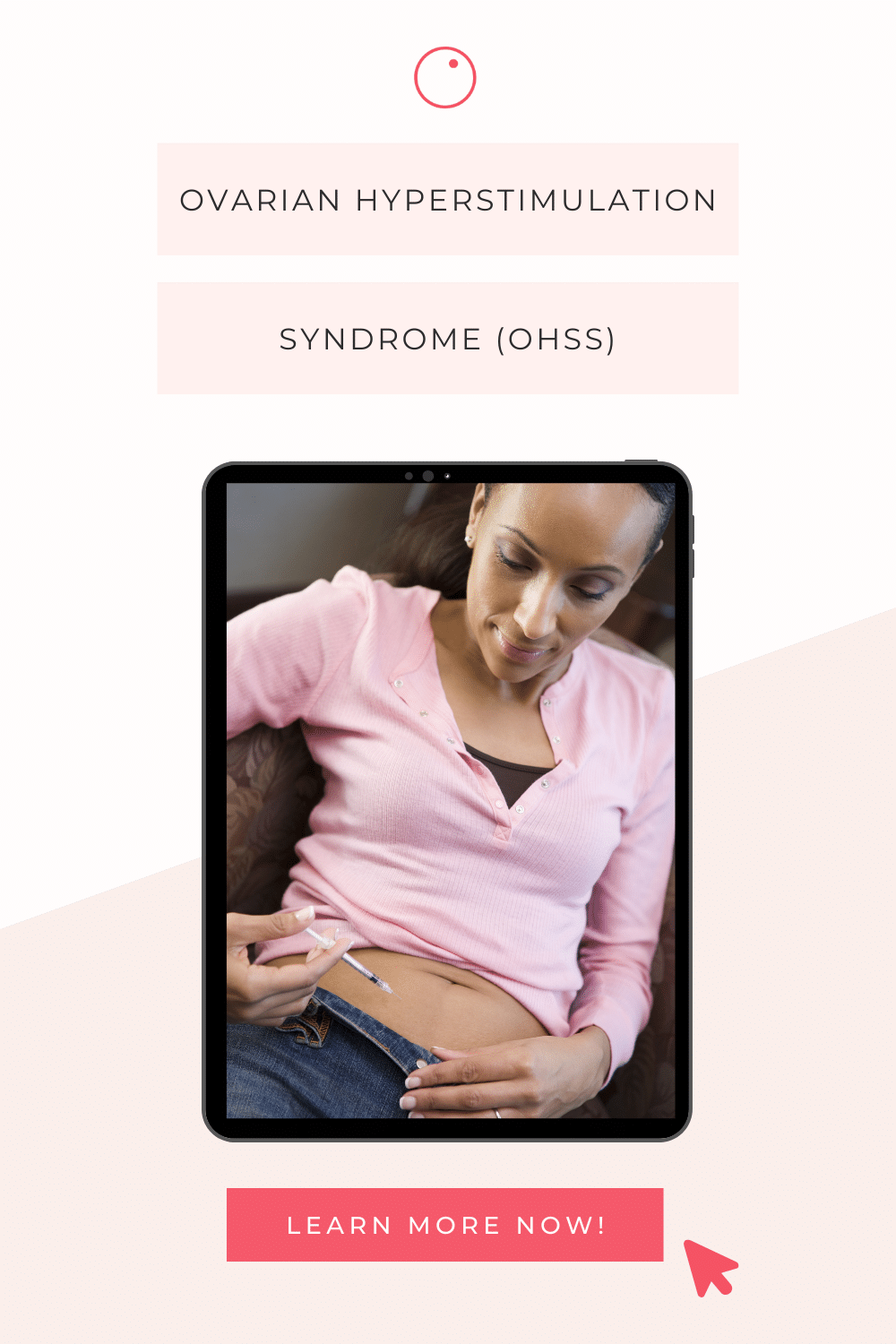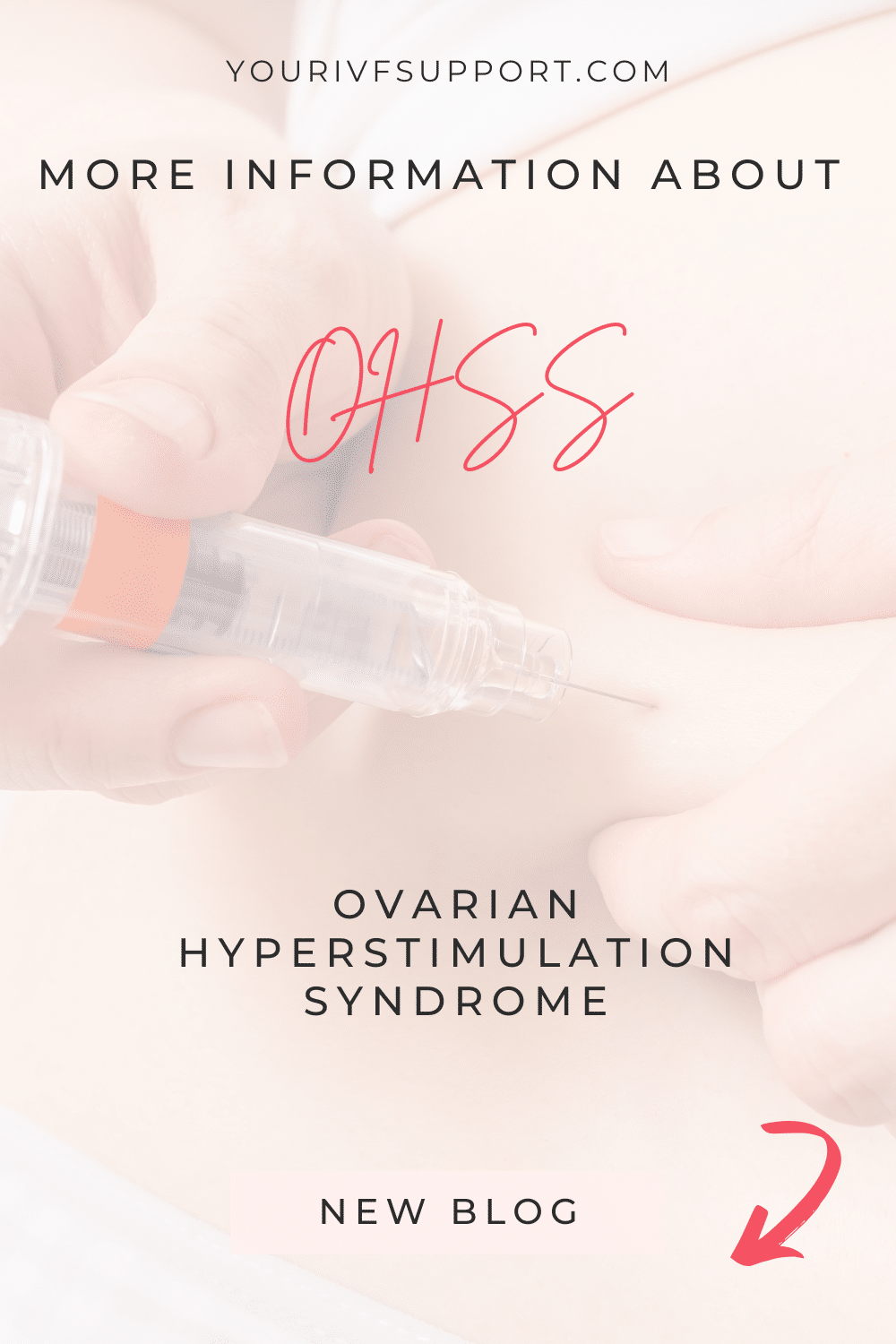If you are interested in fertility treatment abroad, especially genetic testing, egg donation, embryo donation or sex selection, it is important to find out about OHSS. OHSS can occur when you take hormones to stimulate your ovaries to produce more eggs for treatment. In this blog we will cover everything you need to know about OHSS, from causes and symptoms to treatment and prevention. I will also look at the risk factors and give you tips on how to reduce your risk of OHSS.
I want to make sure that you are well informed and can make an informed decision about your fertility treatment abroad. So let's get started!
An explanation of what OHSS is and why it is important if you are interested in treatment abroad.
OHSS stands for Ovarian Hyperstimulation Syndrome, a complication that occurs in some women after taking hormones to stimulate the ovaries. The aim of fertility treatment is to produce as many eggs as possible to increase the chances of treatment success. Ovarian stimulation is done with hormones, usually given as injections or a nasal spray. However, in some women, this can cause the ovaries to be over-stimulated, which can lead to an excessive build-up of fluid in the abdomen or ovaries. This is called OHSS.
There are different degrees of OHSS, from mild cases to severe cases that can lead to serious health problems. Symptoms of OHSS can include nausea, abdominal pain, bloating, swelling and shortness of breath. In severe cases, OHSS can lead to life-threatening complications such as blood clots and kidney failure.
If you are interested in fertility treatment abroad, it is important to find out about OHSS. Because fertility treatment abroad is often cheaper and less restrictive than in some other countries, many women choose to have treatment abroad. However, the quality of medical care and compliance with health standards can vary in some countries, and OHSS can be a risk if treatment is not carried out properly. A good source of information and careful research about the clinic and medical staff can help minimise the risk of OHSS.
It is therefore important to be well informed about OHSS and other complications associated with fertility treatment before making a decision. In the following sections, we will look in more detail at the causes, symptoms, risk factors, treatment and prevention of OHSS.
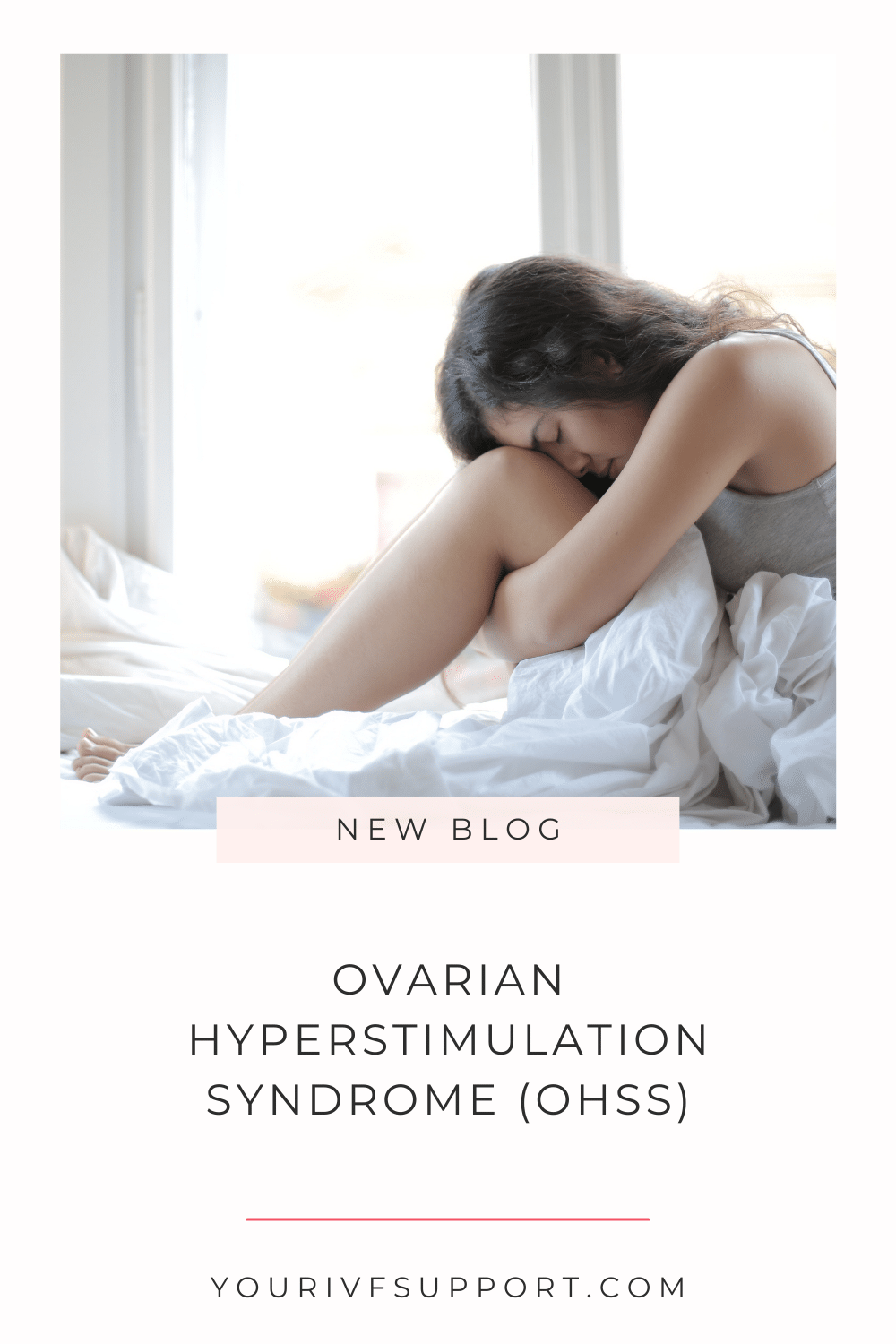
Causes and symptoms of OHSS
The causes and symptoms of OHSS are discussed in more detail below. It is important to understand why OHSS occurs and how to recognise it so that it can be treated early. If you are planning fertility treatment, it is important that you know the symptoms of OHSS so that you can act quickly if they occur. So let's take a closer look at the causes and symptoms of OHSS.
Explaining why OHSS occurs
OHSS occurs when a woman's ovaries become over-stimulated. Normally, the ovaries are stimulated by hormones that make the body produce more eggs than normal. During stimulation, the body can overreact to the hormones and produce too many eggs. This leads to overproduction of oestrogen, which can cause fluid to build up in the ovaries and abdomen.
The exact causes of OHSS are not fully understood. However, there are certain factors that may increase the risk of developing OHSS. For example, women with polycystic ovary syndrome (PCOS) have a higher risk of OHSS than other women. Women who are younger, have a higher number of follicles at stimulation or receive high doses of hormones also have a higher risk of OHSS.
In rare cases, OHSS can occur without hormone stimulation. This is called spontaneous OHSS and can be caused by factors such as pregnancy, overstimulation of the thyroid or taking hormone supplements.
It is important to know that OHSS does not always occur and most women who have fertility treatment do not have any complications. However, if you are concerned that you have an increased risk of OHSS, you should talk to your doctor about how you can minimise your risk. In the following sections, we will look at the different levels of OHSS and the symptoms associated with it.
The symptoms of OHSS can vary depending on the severity of the condition. There are three grades of OHSS: mild, moderate and severe. Here is an overview of the symptoms of mild, moderate and severe OHSS.
Mild OHSS: In mild OHSS, the symptoms may be mild and uncomfortable. You may experience the following symptoms:
- nausea
- vomiting
- Bloating
- Mild abdominal pain or discomfort
- Slight weight gain due to water retention in the body
- Mild enlargement of the ovaries
Moderate OHSS: With moderate OHSS, symptoms are more pronounced and severe. Symptoms may include:
- Severe abdominal pain or cramps
- Severe nausea and vomiting
- Shortness of breath or breathlessness
- Increased fluid retention in the abdomen
- Enlargement of the ovaries
- Weight gain of several pounds due to fluid retention in the body
Severe OHSS: Severe OHSS is a serious condition that requires immediate medical attention. Symptoms may include:
- Very severe abdominal pain or cramping
- severe nausea and vomiting
- shortness of breath or breathlessness
- Large accumulation of fluid in the abdomen or chest
- enlargement of the ovaries
- signs of dehydration such as dry mouth, thirst and dark urine
It is important to know that not all women with OHSS will experience all the symptoms. Some women may only have mild symptoms, while others may have more severe symptoms. If you are undergoing fertility treatment and experience symptoms of OHSS, you should tell your doctor immediately.
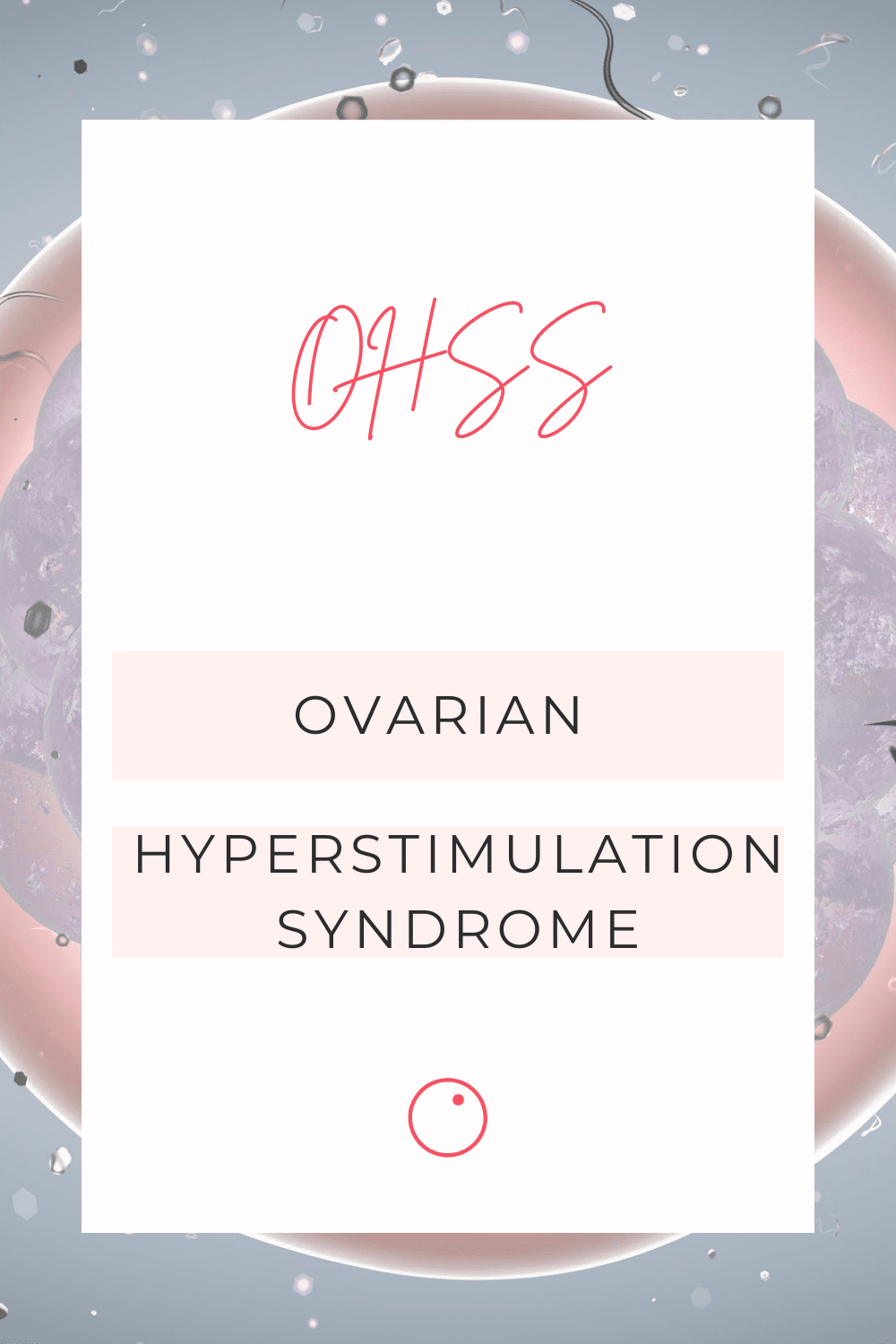
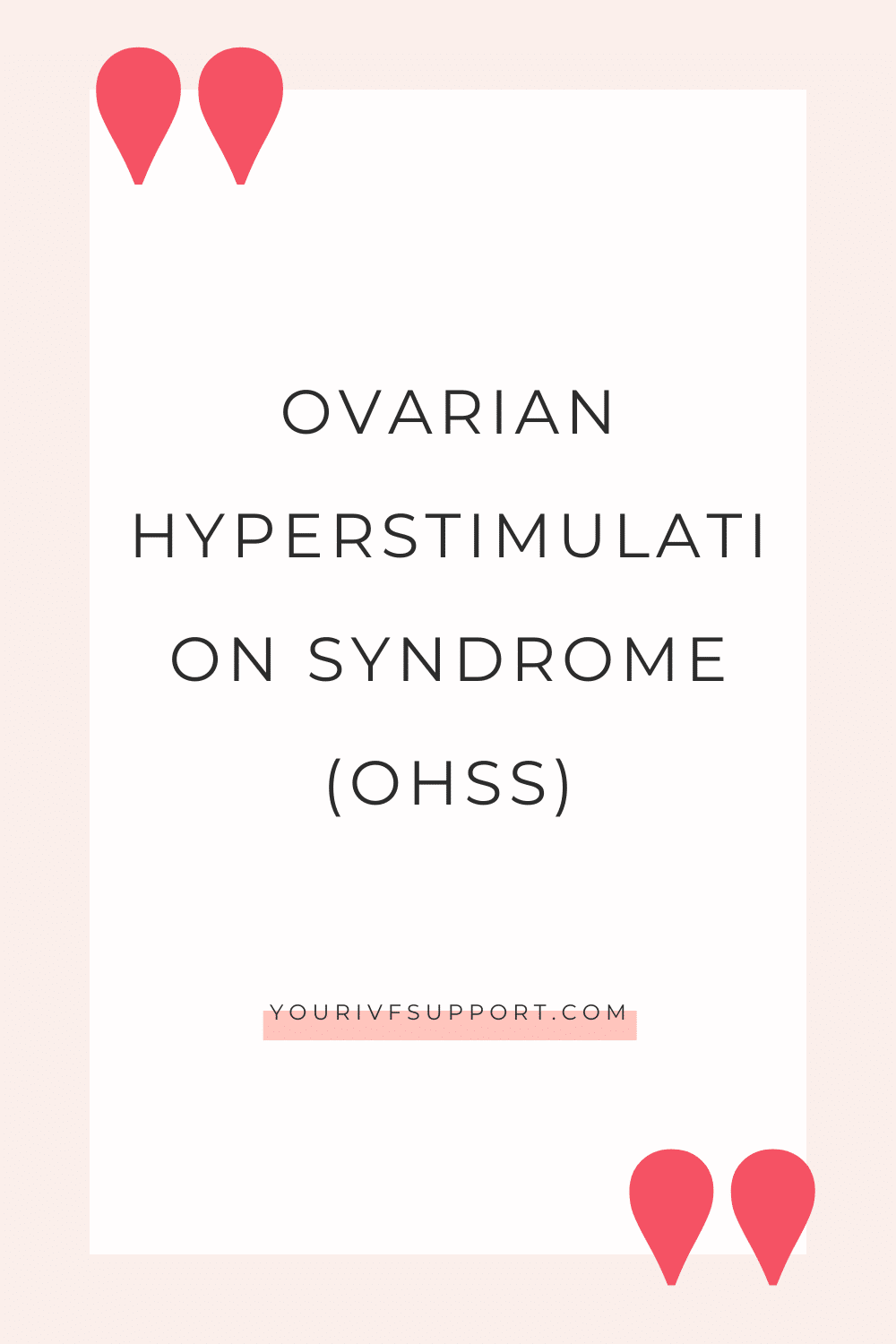
Risk factors for OHSS
There are certain factors that can increase a woman's risk of developing OHSS. If you are planning to have fertility treatment, you should be aware of these risk factors and take steps to minimise the risk of OHSS. In the next section, we will look at the most common risk factors for OHSS.
Description of factors that can increase the risk of OHSS, e.g. age, BMI, PCOS, etc.
There are several factors that can increase a woman's risk of developing OHSS. Some of these factors are
Age:
A woman's age can affect her risk of OHSS. Women under 30 have a higher risk of OHSS than older women.
BMI:
A higher body mass index (BMI) can increase the risk of OHSS. Women with a higher BMI have a higher risk of OHSS than women with a lower BMI.
Number of follicles:
The number of follicles that grow during ovarian stimulation can affect the risk of OHSS. Women who grow more follicles have a higher risk of OHSS than women who grow fewer follicles.
Hormone dose:
A higher dose of hormones used to stimulate the ovaries may increase the risk of OHSS. Women who receive higher doses of hormones have a higher risk of OHSS than women who receive lower doses.
Polycystic ovary syndrome (PCOS):
Women with PCOS have a higher risk of OHSS than other women. PCOS is a metabolic disorder in women characterised by increased levels of male hormones, irregular menstrual cycles and ovarian cysts.
It is important to note that not all women undergoing fertility treatment are at increased risk of OHSS. However, it is important that you are aware of the risk factors and take steps to minimise the risk of OHSS. In the next sections, we will look at the tests that can be used to diagnose OHSS and the treatment options for OHSS."If you are having fertility treatment and experience symptoms of OHSS, you should tell your doctor immediately."
How is OHSS diagnosed?
Diagnosing OHSS requires a thorough examination and observation of symptoms. There are several tests that can be used to diagnose OHSS and determine the severity of the condition. The following section describes the most common tests used to diagnose OHSS.
Overview of the different tests used to diagnose OHSS
There are several tests that can be used to diagnose OHSS. Some of these tests are
Physical examination:
A physical examination may show signs of OHSS, such as an enlarged uterus, fluid build-up in the abdomen, or pain in the lower abdomen.
Ultrasound:
An ultrasound scan can be used to determine the severity of OHSS. An ultrasound scan can show signs of fluid build-up in the abdomen or ovaries and determine the severity of OHSS.
Blood tests:
Blood tests may be done to monitor oestrogen and other hormone levels. An increase in oestrogen levels may be a sign of OHSS.
Urine tests:
Urine tests may be done to check for signs of dehydration. Dehydration is a possible complicating factor in severe OHSS.
CT or MRI scans:
CT or MRI scans may be done in severe cases of OHSS to look for fluid build-up in the abdomen or ovaries.
It is important to know that not all tests are needed to diagnose OHSS. Your doctor will carry out the tests you need, depending on your symptoms and the severity of your condition. If you are undergoing fertility treatment and experience any signs of OHSS, you should tell your doctor immediately. The following sections describe the different treatment options for OHSS.
Treatment for OHSS depends on the severity of the condition. For mild OHSS, symptomatic treatment may be enough, while severe OHSS may require hospitalisation. The next section looks at the different treatment options for OHSS.
The treatment of OHSS depends on the severity of the condition. For mild OHSS, symptomatic treatment may be enough, while severe OHSS may require hospitalisation.
Some of the possible treatments that can be used to relieve OHSS include
Fluid replacement:
One of the most important treatments for OHSS is fluid replacement. Women with OHSS often lose large amounts of fluid through vomiting and diarrhoea. Intravenous fluids can help replace fluid loss and minimise the risk of dehydration.
Pain medication:
Painkillers may be used to relieve the pain and cramps of OHSS.
Medications to regulate hormone levels:
In some cases, it may be necessary to regulate hormone levels to relieve the symptoms of OHSS. Medications such as gonadotropin-releasing hormone (GnRH) agonists or anti-oestrogens may be used.
Wait and see:
For mild OHSS, it may be enough to wait for the symptoms to go away on their own. In many cases, the symptoms will go away on their own within a few days to weeks without the need for any special treatment.
Drain the ascites:
For severe OHSS with large amounts of ascites, ascitic drainage may be considered. This involves draining fluid from the abdomen through a catheter to reduce abdominal pressure and relieve symptoms.
It is important to remember that the choice of treatment depends on the severity of the condition and that if OHSS symptoms occur, action must be taken quickly. If you are undergoing fertility treatment and experience symptoms of OHSS, you should tell your doctor immediately.
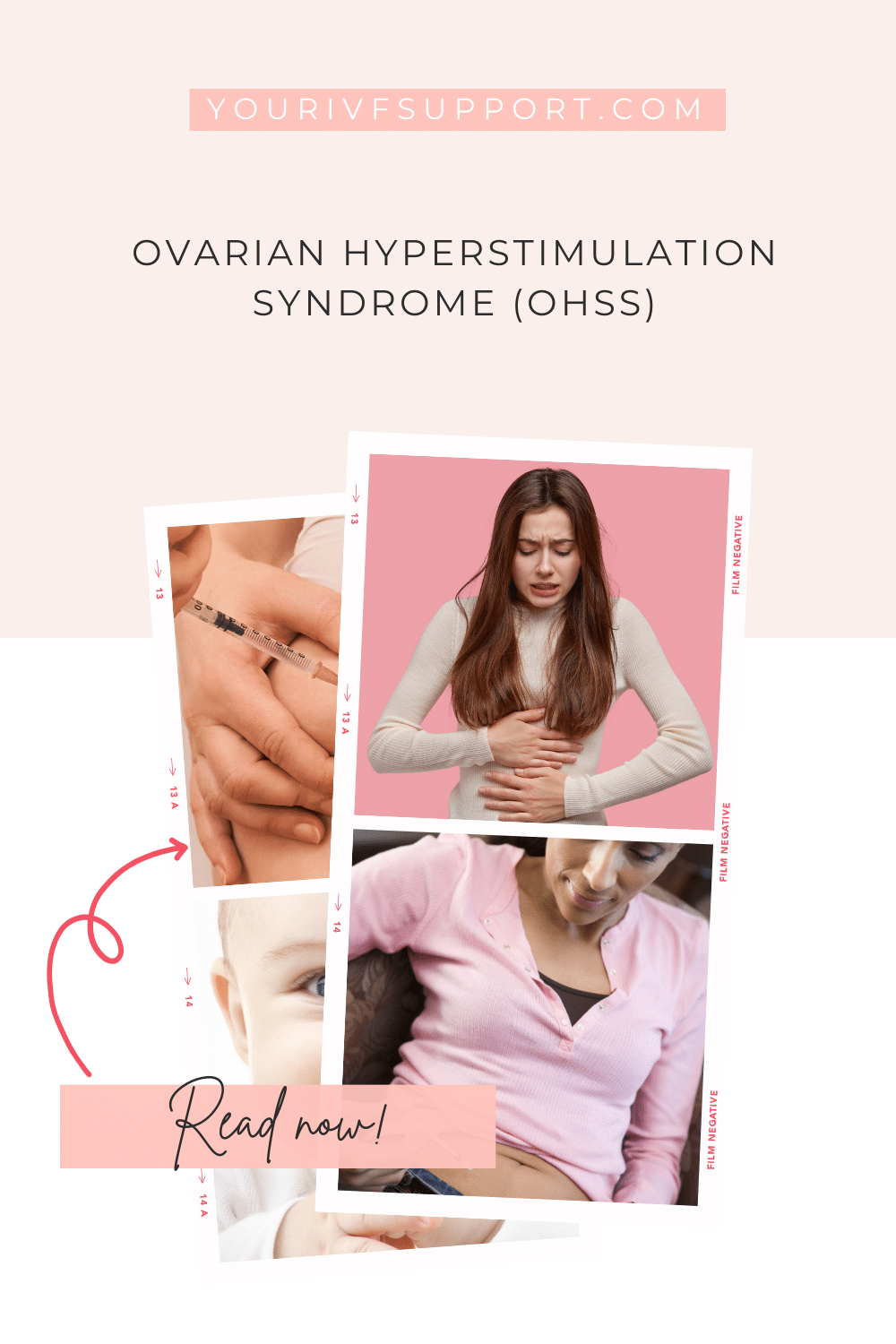
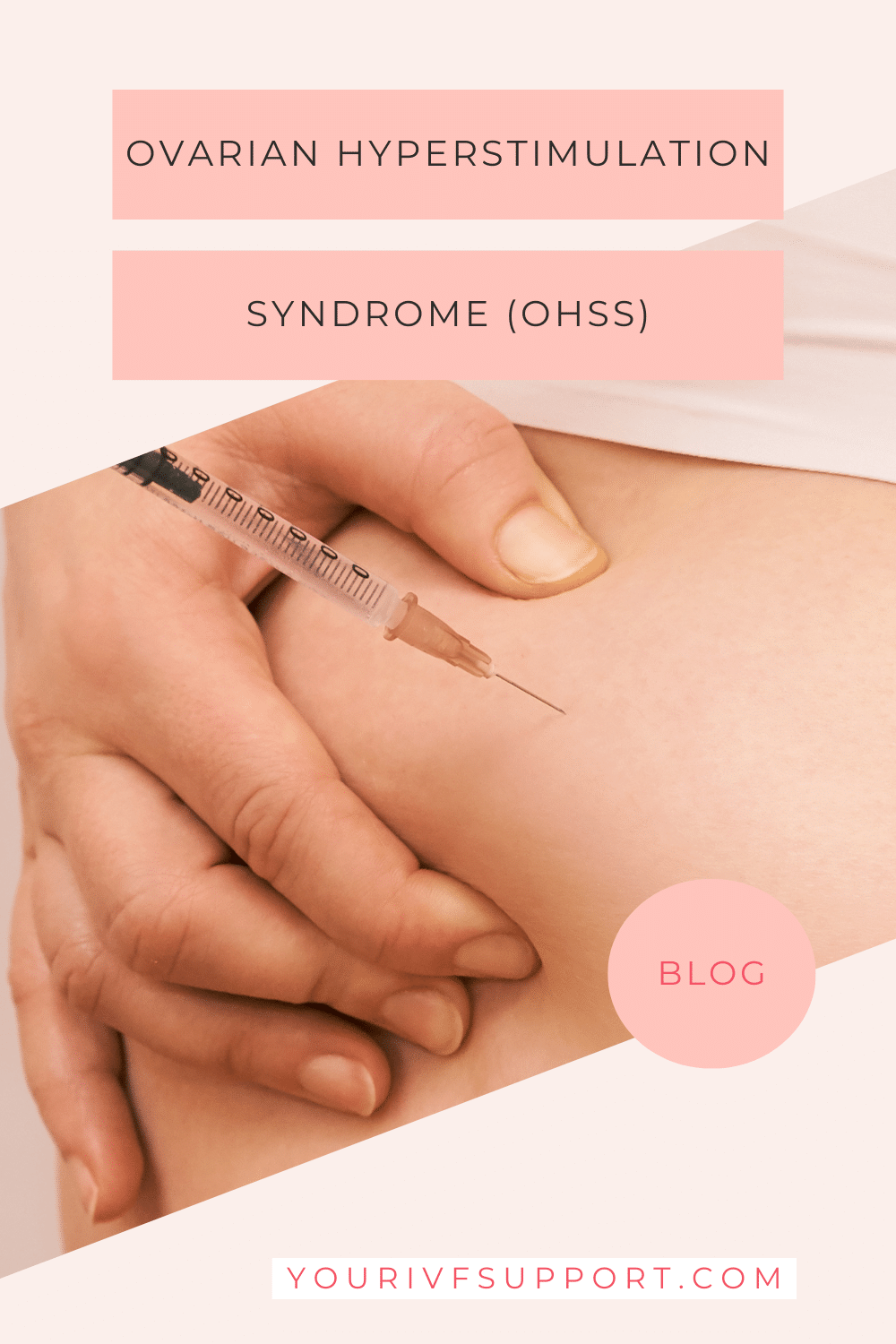
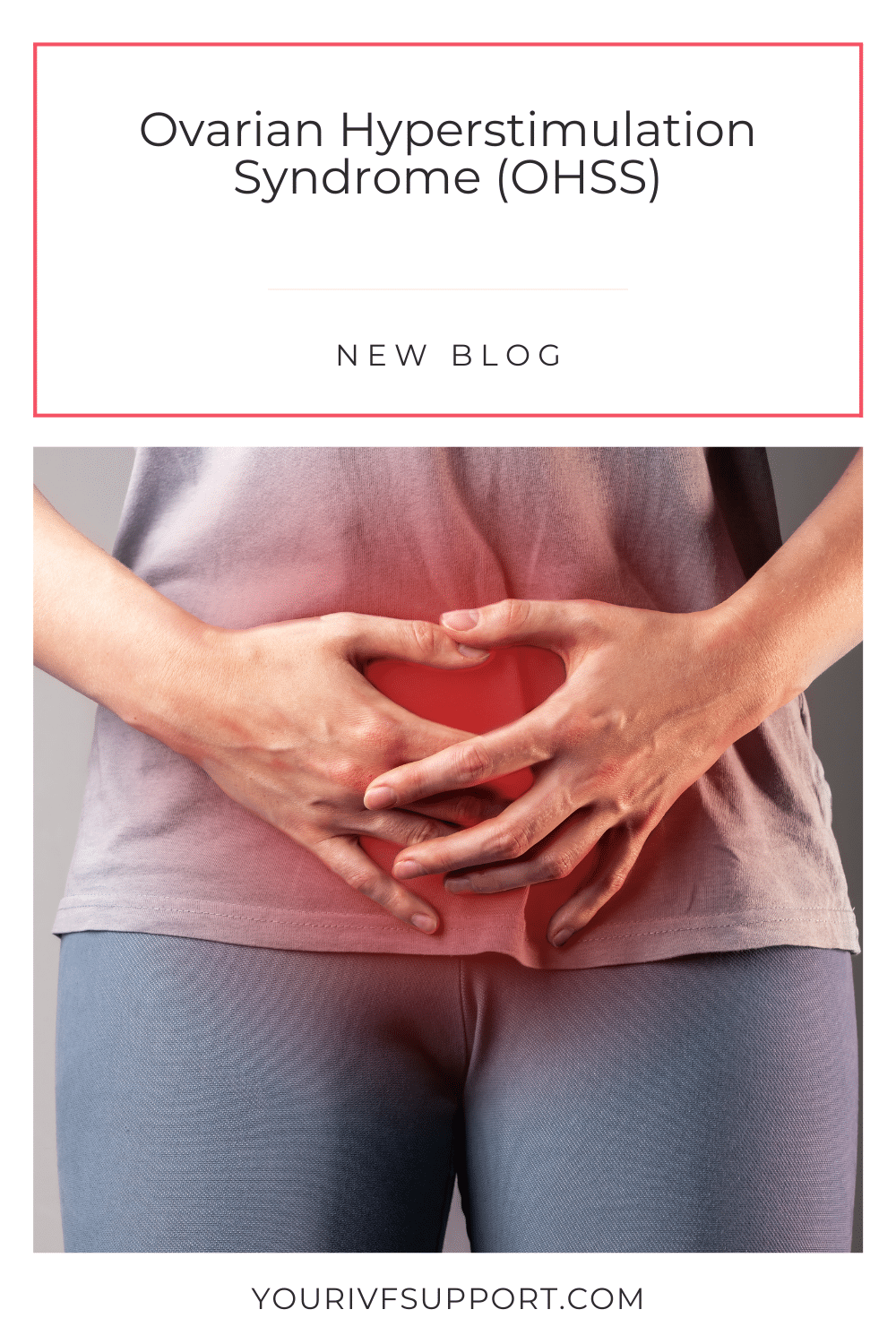
Preventing OHSS
Because OHSS is a potentially serious condition, it is important to take steps to minimise the risk of OHSS. In the next section, we will look at the different steps that can be taken to reduce the risk of OHSS.
Tips and advice on how to reduce the risk of OHSS, such as using lower doses of hormones or using antagonist protocols.
There are several steps that can be taken to reduce the risk of OHSS. Some tips and advice to reduce the risk of OHSS include
Use lower doses of hormones:
One of the main causes of OHSS is the use of high doses of hormones to stimulate the ovaries. Using lower doses of hormones can reduce the risk of OHSS. Your doctor can help you find the right dose for your particular situation.
Use antagonist protocols:
Antagonist protocols are treatment protocols that include the use of GnRH agonists. These protocols have been shown to reduce the risk of OHSS compared to other protocols.
Regular follicle monitoring:
It is important to monitor follicle counts regularly to minimise the risk of OHSS. Your doctor can monitor the number of follicles during treatment and adjust the hormone dose accordingly to reduce the risk of OHSS.
Hydration:
It is important to stay hydrated during treatment to reduce the risk of dehydration and OHSS. Drink water and other fluids regularly to keep your body hydrated.
Avoid physical exertion:
It is important to avoid physical exertion during treatment to minimise the risk of OHSS. Avoid heavy physical work, sports and other strenuous activities to reduce the risk of OHSS.
It is important to note that every case of OHSS is different and the choice of prevention methods will depend on the individual case. It is important to talk to your doctor about the best course of action for your particular situation.
Conclusion
OHSS is a serious condition that can occur in women undergoing fertility treatment. Symptoms of OHSS range from mild to severe and can lead to dehydration, kidney failure and other complications.
There are several tests that can be done to diagnose OHSS, and treatment depends on the severity of the condition. Treatment may include symptomatic treatment, fluid replacement, pain medication and medication to regulate hormone levels.
To minimise the risk of OHSS, measures can be taken such as using lower doses of hormones, antagonist protocols and regular follicular monitoring.
In conclusion, I would advise you to be well informed and do your research before deciding to undergo fertility treatment abroad. It is important to choose a clinic that offers high quality treatments and has experienced doctors and staff. It is also advisable to familiarise yourself with the laws and regulations of the country where the treatment will be carried out, especially regarding genetic testing, egg donation, embryo donation or sex selection.
I hope this blog has helped to inform you about OHSS and helped you to make an informed decision about your infertility treatment.
